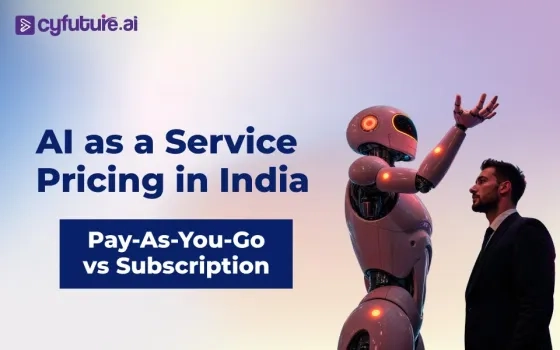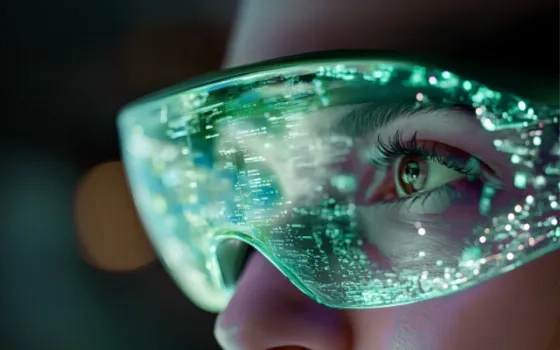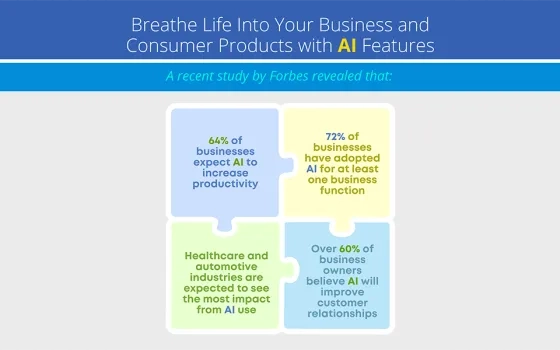
Published in online version of Business World
The rise of machines and automation
One measure of the status of civilization is the complexity of tools used by the society. As societies have progressed, tools and machines used by them have become increasingly complex. Despite their rising complexity the current set of tools and machines still need humans to create and use them and they can only do things what humans have preprogrammed them to do or control them to do. In particular, current set of machines cannot learn and enhance their knowledge.
Robotics and Automation
However, a new set of machines are emerging that can learn and they need minimal human intervention to operate. They are pre programmed with a small set of instructions and ‘learn’ by examining the working conditions. Like humans their knowledge evolves with time and like humans they can work of their own with little supervision. They may have a physical appearance and some movable parts and are referred to as robots or it could be a piece of software. Increasing many of the functions performed by humans would be automated even as the machines doing this will tend to work autonomously. The driving force in both cases is same, Artificial Intelligence. It is the branch of computer science that focusses on developing intelligence in computers, especially ability to perform cognitive functions e.g. recognition, perception, reasoning, attention etc. The idea is that the human intelligence can be precisely described and then simulated by machines. The growth of Artificial Intelligence is helped by growth in computer power, storage, cloud computing which allows computing power and storage to be shared, Big data which allows efficient search in large sets of data stored in different formats, advancement in statistical techniques etc.
They would create far reaching implications on human civilizations and would cause social, political and economical disruption unheard of since the days of Industrial Revolution which disrupted the agrarian societies and tilted the balance of power in the favour of urban centers. Also due to advancement in telecommunication, the world is much better connected nowadays and this will spread their impact across different parts of the world in a vastly reduced time frame.
Implications
Economy
Primary Sector
It includes all those economic activities which are connected with extraction and production of natural resources, e.g., agriculture, fishing, mining, forestry etc. The sector is usually most important in less-developed countries, and typically less important in industrial countries. As per World Bank’s website’s data for 2010, only 3% of High Income countries’ working population worked in this sector as compared to 45% of Low and Middle Income countries. The impact of robotics will be minimum in this sector. As robots can displace humans, they may cause massive unemployment in this sector in Low and Middle income countries which could be politically disastrous. On the other hand, this sector plays a minor role in the economy of developed countries both in terms of employment as well contribution to GDP. Besides, development of robots which can work in fields, mines etc where conditions vary continuously is technically very challenging.
So, while various activities e.g. picking a fruit, spraying a pesticide, planting a seed, rock drilling, ore picking may eventually be done by autonomous robots, the adaption will be less in near future. Other applications e.g. use of drones, GPS, sensors, control systems for surveillance, spraying of pesticides etc or use of driverless trucks are already finding commercial use.
Secondary Sector
It includes all activities which are concerned with the processing materials which have already been extracted at the primary stage, e.g., manufacturing, construction etc. About a quarter of global working population works in this sector. Robots are already used in industry for tasks that need precision e.g. placing chips on boards, hazardous e.g. shifting rods in nuclear reactors or otherwise difficult e.g. painting a car body. However robotics is now evolving to replace the average assembly line worker. As per International Federation of Robotics (IFR), between 2010 and 2014, the average robot sales increase was at 17% per year (CAGR). Robots are commonly used in automotive, electronics/electricals, metals and machinery, chemical, rubber and plastics and food industry. As per IFR’s data, robot density – Number of multipurpose industrial robots per 10,000 persons employed in manufacturing in 2015 was 69 globally but peaked at 531 in South Korea, implying that there is huge scope of adoption even with current technologies. Besides the controls used in various phases of manufacturing cycle of a product will be automated. Sectors of secondary sector will also benefit from another technology in future i.e. 3 D printing which allows customized products to be manufactured.
Tertiary Sector
Often referred to as services sector, it involved supplying of services to consumers and businesses e.g services related to retail, banks, hotels, transportation, education, health, social work, recreation, media, IT and communications, utility services. As countries develop, the share of services sector in GDP increases. As per World Bank’s website’s data for 2010, 74% of High Income countries’ working population worked in this sector as compared to 34% in Low and Middle Income countries. This is also the sector where various aspects of human intelligence e.g. emotions, perception, analysis and reasoning, pattern recognition etc directly influences the value addition that a person does to his or her job. In general, jobs in this sector draw higher salaries than the other two sectors. Here Artificial Intelligence driven software would create a bigger impact than robotics.
Artificial Intelligence driven software
The routine jobs in various industries e.g. accountants, clerks etc are at risks. In general any job where a person sits in front of a computer screen and processes and interprets data will be replaced by a software. Similarly customer service functions would be impacted as machine learning and natural language processing would create software that would provide conversation that is quick and easy for consumers to understand and is much less expensive for companies.
Analysis is the work most commonly associated with services sector though the role has many names besides, analyst. But financial analysts who study data patterns and predict market movements or advice on asset allocation are getting challenged by algorithms which are getting increasing autonomous and more efficient. But so are the roles insurance underwriters, tax preparers, loan officers, credit analysts, and accounting professionals. Newsbots, Artificial Intelligence driven software have started created articles and stories for publishers in Europe, US, China etc. In future, software would play a major role in prediction as well as diagnosis of diseases. Much of the current workload of teachers e.g. grading, curriculum design etc would be automated.
In transportation, the biggest visible change would be the advent of driverless vehicles. Driverless cars, buses, trucks, short haul trains as well as long haul trains are undergoing trials in different parts of the world. Drones will become more intelligent and number of pilots in aircrafts will reduce to one. Driverless ships are also being tested. This should improve fuel efficiency, reduce accidents, improve network utilization and off course reduce the cost of drivers.
In IT software that would heal defects in software, servers and infrastructure is emerging. In telecommunication, networks that would self heal and self optimize would become the norm. Advances in Internet of Things (IoT) would connect increasing number of devices to networks and spread the benefits of Artificial Intelligence. Gartner predicts that 20.4 billion devices would be connected by 2020.
It is a moot point if machines can gain superiority over humans. Computers have defeated humans in games like Jeopardy (IBM’s Watson), Go (Google’s AlphaGo), Chess (IBM’s Deep Blue). These and other success stories of Artificial Intelligence refers to the scenarios where a purpose built software competes against humans who can perform variety of other functions. A robot capable of doing better than humans in all fields of human intelligence e.g. emotions, perception, pattern recognition, analysis and reasoning etc taken together is still in the realms of science fiction.
Robotics
The impact of robotics would be felt in hospitality sector. For example, Pengheng Space Capsules Hotel in China and Hen na Hotel in Japan heavily use robots. Robots may replace the ubiquitous receptionist. In medicine larger proportion of surgeries would be performed by robots with greater precision, smaller cuts and relatively smaller supervision.
Overall
These machines would create unprecedented efficiency in production processes and enormously increase prosperity. They would be able to work on almost 24X7 basis and would not need a break for leisure or for needs of a human body. With highly precise, repetitive motions, the robots would reduce errors and eliminate defects associated with humans. According to McKinsey & Company, manufacturing companies can increase productivity by a massive 300 percentage if they start using modules such as collaborative robots and autonomous guided vehicles.
But they would slowly but steadily displace humans from variety of roles that humans perform today creating massive disruption in employment. The creation of new jobs would be much smaller as compared to the jobs that would be eliminated. The impact on different countries would vary, One study by PricewaterhouseCoopers suggests that by 2030s, two fifth of jobs in US would be at risk as compared to one fifth in Japan. Due to political pressure, developing countries will be slow to adopt and hence impact may be lower.
Society
Domestic chores
Robots can also perform domestic chores e.g. ironing the clothes or cleaning floors or cutting grasses in lawns. But these are expensive to buy and maintain and cannot handle unexpected situations easily say unbuttoning a shirt or moving out of a pit or negotiating a staircase. Gradually robots would take over the domestic chores freeing people especially women from these tasks that human kind has carried on since they started settled living. That would leave more time for women to pursue career options. Due to the costs involved, the use of robots for domestic work will be less as compared to their use for industrial sector. Other area that Artificial Intelligence will impact will be control systems of domestic appliances. Washing machines, microwaves, refrigerators etc would emerge which would self-regulate by sensing the cloths, food etc
Pets
Robotic pets are already available in the market. They mimic a living animal. Future pets would use machine learning capabilities and learn how to behave by studying their masters’ emotions and speech. So their responses would be in sync with masters’ expectations. They would have therapeutic value as they would bring comfort and company especially to aged people.
Human relations
Android robots are also in making. They look like humans and like pets would evolve to react as expected by humans. They could take the role of perfect companions, speaking and reacting as per humans’ desires. In future, it would even be possible to have physical relationships with robots and some models are already in the market. Robots are also emerging that would help the aged people. They come in two forms, one that can talk and give company. The second ones come equipped with sensors etc and can take care.
This will have profound changes in human relationships as we know today. In particular, the institution of marriage and need to have children will reduce. The impact would be different on the two genders. Slowly women would be released from domestic drudgery but their role in physical relationship will also reduce.
Public places
Robots may also take up the roles played by public servants. For example, recently a prototype robot joined police force in Dubai . Around the world and for centuries, people in power are suspected to have biases based on religion, race, gender, age, caste etc. Humanoid robots if deployed for public role are expected to suffer less from these biases. However, use robots in these roles would happen after their adaption in industrial and domestic sector.
Politics
The massive increase in productivity and hence efficiency coupled with huge unemployment can break social cohesiveness. The corporations having control of Artificial Intelligence related products and services and those using these significantly will gain enormously, leading to massive creation and concentration of wealth. But a signification section of the population would be disillusioned as they would not have the required skills to stay employed. Politicians need to ensure that this wealth is equitably distributed. This could take the form of an assured basic income for all or disguised employment say in government sector where more people may be employed than needed. Retraining of those directly impacted should the central theme. The tax laws would need to amend and appropriate social security measures would be needed as the current structures are not adequate for the future. Societies unable to cope up with these changes will face social unrests reminiscent of revolutions in Europe during the days of Industrial Revolution.
Fortunes of countries would also change. Developing countries who are benefiting due to outsourcing of manufacturing and services sector work by developed countries will lose the low-cost arbitrage. However, this will not result in creation of new jobs in developed countries as robots and automation will eliminate many of these. Developed countries e.g. US, Japan, Germany etc and some emerging nations e.g. China, Korea etc are better prepared to benefit from the upcoming technological changes and hence would emerge richer.
Judgement day
The rise of machines is not a big bang event but a silent revolution already underway. For example as per Center for Business and Economic Research at Ball State University, US lost 5.6 million jobs between 2000 and 2010 and 85 per cent of these jobs losses are actually attributable to technological change — largely automation. Advances in technology will only change the pace but there is no inflection point. The intelligence of humans has created conditions for the next generation of machines to take over and create quantum jump in prosperity. The same intelligence is needed to control the machines and spread the gains evenly. The only limiting factor that stops humans from reaping the benefits of Artificial Intelligence is their natural intelligence.



















